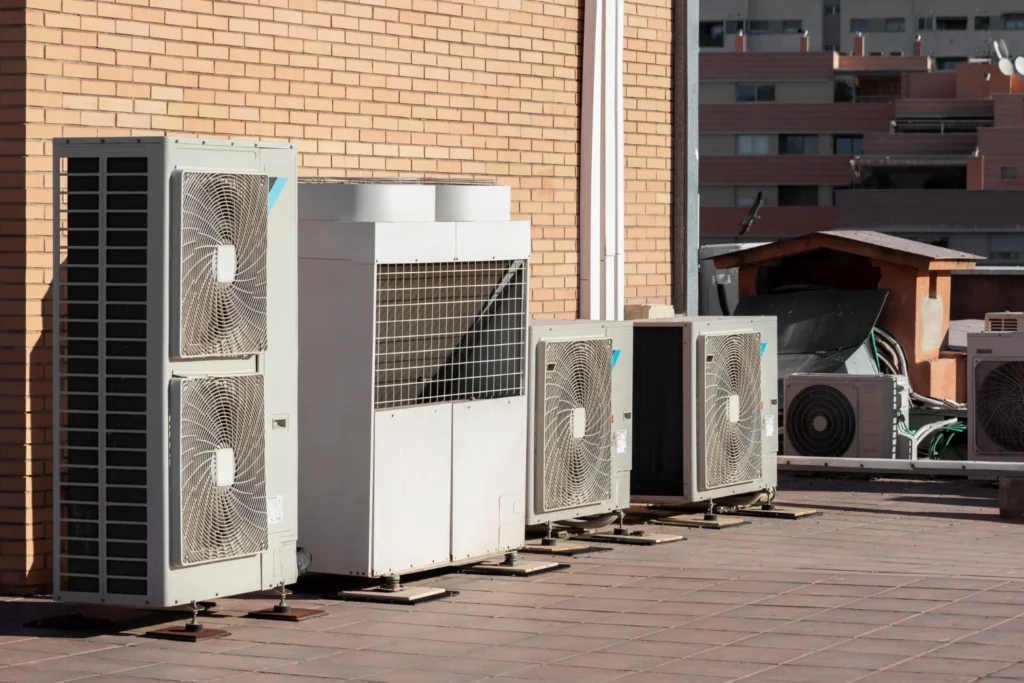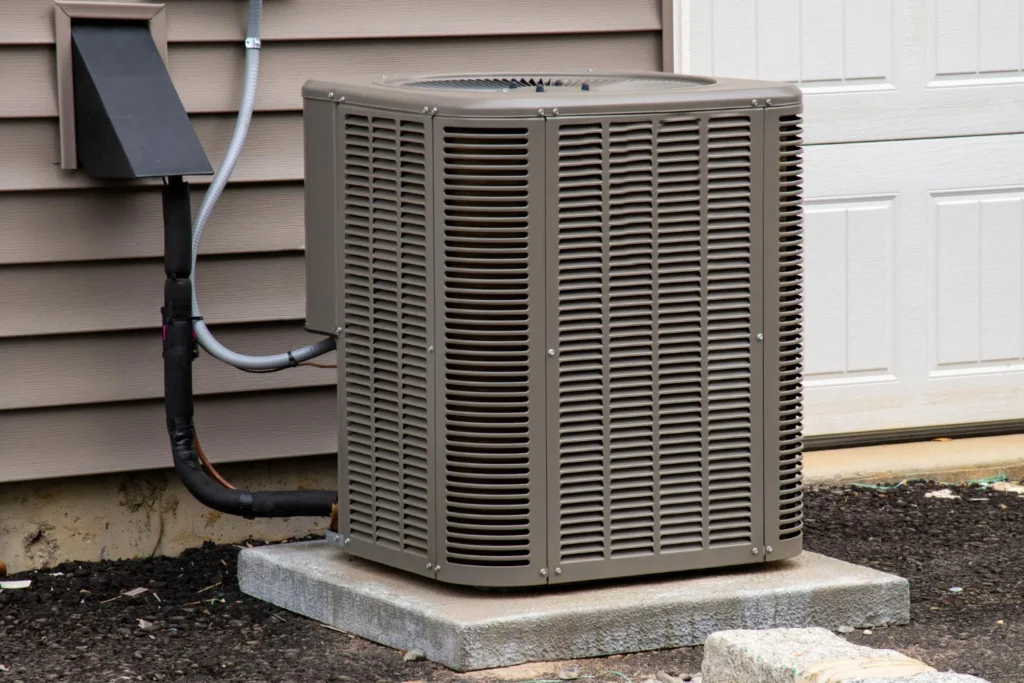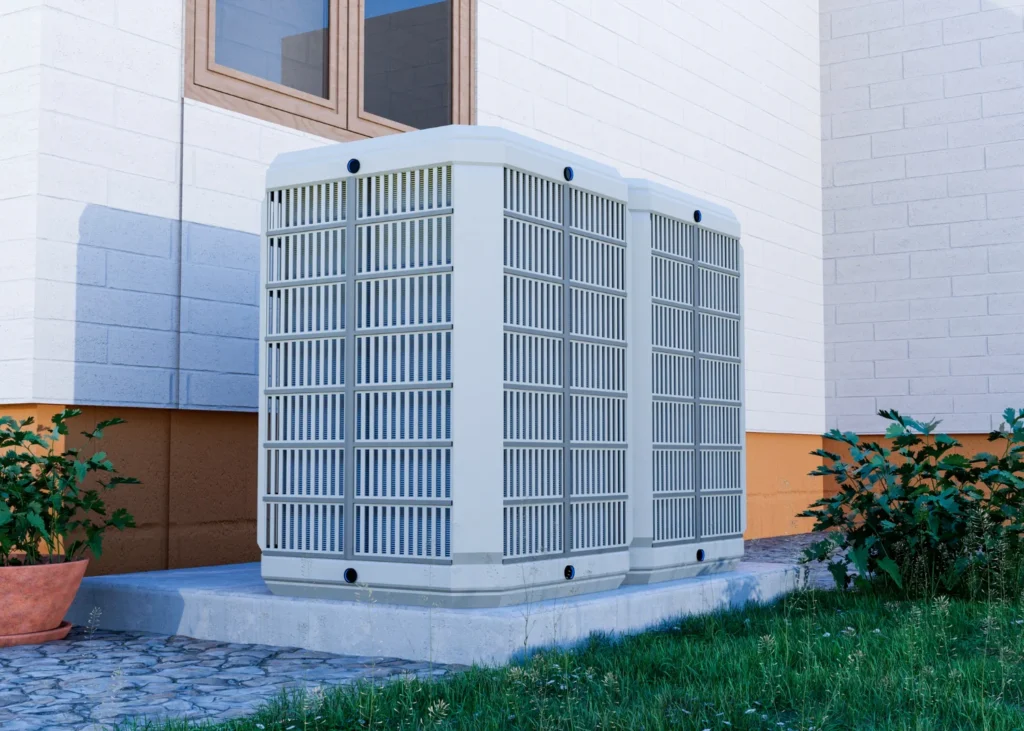Are you looking to beat the Sugar Land heat? The stakes are high in the battle of ductless AC vs central air conditioners in Sugar Land. Choosing the right cooling system for your home can make all the difference in staying comfortable during those scorching Texas summers.
But with so many options available, making timely decisions can be challenging. Fear not! Our guide will unveil the pros and cons of ductless AC and central air conditioners, giving you the inside scoop on which option reigns supreme in the Sugar Land heat. So, grab a cold drink, kick back, and dive into the world of home cooling solutions.
Table of Contents
ToggleDuctless AC Vs Central Air Conditioners
When it comes to cooling your home, you have various options, with ductless AC vs central air conditioners. Understanding the differences between these options is crucial for making an informed decision about which system is best suited to your needs.
So, What Is A Ductless System Anyway?
A ductless air conditioning system, or a mini-split system, operates without requiring ductwork to distribute cooled air throughout your home. Instead, it consists of an outdoor compressor unit and one or more indoor air-handling units, each installed in individual rooms or zones. These indoor units are connected to the outdoor unit via refrigerant lines, allowing for efficient heat exchange and precise temperature control.
Choosing Ductless AC VS Central Air Conditioners

When selecting the most suitable cooling system for your home, deciding between ductless AC vs central air conditioners requires careful consideration of various factors. Let’s explore the key factors to help you make an informed decision:
Home Size and Layout
- Central Air: Central air conditioning systems are ideal for larger homes with existing ductwork. They provide efficient whole-home cooling, ensuring consistent comfort throughout the house. However, installing ductwork can be costly and disruptive, especially in older homes or those with complex layouts.
- Ductless: Ductless systems are well-suited for smaller homes, apartments, or rooms without existing ductwork. Their compact design and zoning capability make them perfect for providing targeted cooling to specific areas of the house without the need for extensive renovations.
Energy Efficiency
- Central Air: While central air systems can be energy-efficient when properly sized and maintained, ductwork efficiency can impact overall performance. Leaks and inefficiencies in ductwork can lead to energy losses, reducing the system’s efficiency.
- Ductless: Ductless systems offer higher energy efficiency by eliminating ductwork. With no ducts to leak or lose heat, ductless systems can deliver more consistent and efficient cooling, resulting in lower energy bills over time.
Cost Considerations
- Central Air: The cost of installing central air conditioning can vary depending on home size, existing infrastructure, and labour costs. While major air systems may have lower upfront costs in homes with existing ductwork, installing new ductwork can significantly increase the overall cost.
- Ductless: Ductless systems typically cost more upfront than central air systems. However, their energy efficiency and zoning capability can result in long-term savings on energy bills, making them a cost-effective option for some homeowners.
Aesthetic Preferences
- Central Air: Central air systems are discreet, with most components hidden from view in the attic, basement, or closet. This can enhance the home’s aesthetic appeal by minimizing visual clutter and preserving architectural features.
- Ductless: While ductless systems offer superior flexibility and energy efficiency, indoor units are visible within the living space. Homeowners may consider these units’ impact on their home’s aesthetics and choose models that blend seamlessly with their decor.
Ductless Mini-Split System
Ductless mini-split systems offer a modern and versatile solution for cooling individual rooms or zones in your home without requiring ductwork. Let’s explore the advantages and disadvantages of these systems:
Advantages Of A Ductless Mini-Split System
- Zoning Capability: Ductless systems allow for independent temperature control in different areas of your home, providing personalized comfort and energy savings.
- Energy Efficiency: Without ducts to lose heat or air, ductless systems are highly efficient, resulting in lower energy bills and reduced environmental impact.
- Flexible Installation: Ductless systems are easier to install than traditional central air systems, making them ideal for retrofitting older homes or adding cooling to specific areas without extensive renovations.
- Improved Indoor Air Quality: Ductless systems often feature advanced filtration systems, removing dust, allergens, and other airborne pollutants, resulting in cleaner and healthier indoor air.
Disadvantages Of A Ductless Mini-Split System
- Higher Initial Cost: Ductless systems typically have a higher upfront cost than central air systems, making them less budget-friendly for some homeowners.
- Visible Indoor Units: The indoor units of ductless systems are visible within your living space, which may not be aesthetically pleasing for some homeowners. However, newer models are designed to blend seamlessly with various decor styles.
Central Air Conditioning System

Central air conditioning systems are popular for cooling entire homes, utilizing ductwork to distribute cooled air evenly throughout the living space. Let’s explore the advantages and disadvantages of these systems:
Advantages Of A Central Air Conditioning System
- Whole-Home Cooling: Central air systems provide consistent and uniform cooling throughout the home, ensuring comfort in every room.
- Convenience: With central air, you can control the temperature of your entire home from a single thermostat, offering convenience and ease of use.
- Aesthetic Appeal: Central air systems are discreet, with most components hidden from view in the attic, basement, or closet, preserving the aesthetic appeal of your home.
- Increased Home Value: Installing a central air system can enhance the resale value of your home, making it more attractive to potential buyers.
Disadvantages Of A Central Air Conditioning System
- Ductwork Required: Central air systems rely on ductwork to distribute cooled air, necessitating the installation of ducts throughout the home. This can be costly and disruptive, especially in older homes where retrofitting ductwork may pose challenges.
- Less Flexibility: Central air systems operate as a single unit, meaning you have limited control over individual room temperatures. This lack of zoning capability may result in wasted energy and reduced comfort in some regions of the home.
Ductless Mini-Splits vs Central Air: Pros And Cons
When deciding between ductless AC and central air conditioning systems, weighing each option’s advantages and disadvantages is essential. Let’s explore the pros and cons of both:
Ductless Mini-Splits
Pros:
- Zoning Capability: Ductless mini-splits allow for independent temperature control in different areas of your home, providing personalized comfort and energy savings.
- Energy Efficiency: With no ducts to lose heat or air, ductless systems are highly efficient, resulting in lower energy bills and reduced environmental impact.
- Flexible Installation: Ductless systems are easier to install than central air systems, making them ideal for retrofitting older homes or adding cooling to specific areas without extensive renovations.
Cons:
- Higher Initial Cost: Ductless systems typically have a higher upfront cost than central air systems, making them less budget-friendly for some homeowners.
- Visible Indoor Units: The indoor units of ductless systems are visible within your living space, which may not be aesthetically pleasing for some homeowners.
Central Air
Pros:
- Whole-Home Cooling: Central air systems provide consistent and uniform cooling throughout the home, ensuring comfort in every room.
- Convenience: With central air, you can control the temperature of your entire home from a single thermostat, offering convenience and ease of use.
Cons:
- Ductwork Required: Central air systems rely on ductwork to distribute cooled air, necessitating the installation of ducts throughout the home. This can be costly and disruptive, especially in older homes where retrofitting ductwork may pose challenges.
- Less Flexibility: Central air systems operate as a single unit, meaning you have limited control over individual room temperatures. This lack of zoning capability may result in wasted energy and reduced comfort in some regions of the home.
Cost Of Ductless AC VS Central Air Conditioners

When considering the cost of ductless AC vs central air conditioners, it’s essential to factor in both upfront expenses and long-term savings:
- Ductless AC: While ductless systems have a higher initial cost, their energy efficiency and zoning capabilities can lead to long-term savings on energy bills.
- Central Air Conditioning: Central air systems may have lower upfront costs in homes with existing ductwork, but installing new ducts can significantly increase the overall cost. Additionally, energy losses associated with ductwork can impact long-term efficiency and increase utility bills.
FAQ More About Ductless AC vs Central Air Conditioners
Have questions about choosing between ductless AC and central air conditioners? We’ve got answers:
Which is better, ductless AC or central AC?
The answer depends on your specific needs and preferences. Ductless AC offers zoning capability and energy efficiency, while central AC provides whole-home cooling and increased home value.
What are the disadvantages of ductless air conditioning?
Disadvantages of ductless air conditioning include higher initial costs, visible indoor units, and potentially limited aesthetic appeal compared to central air systems.
Is it cheaper to install a mini-split or central air?
Installation costs vary depending on home size, existing infrastructure, and labour expenses. In some cases, mini-split systems may be more cost-effective, while central air may offer better value in others.
Will a ductless air conditioner cool a whole house?
Yes, ductless air conditioners can cool an entire house, especially in smaller homes or those with open floor plans. Multiple indoor units may be required for larger homes to ensure consistent cooling.
How many rooms can a ductless AC cool?
The number of rooms a ductless AC can cool depends on factors such as the size and capacity of the system. Most ductless systems can effectively cool one to four rooms, but larger systems are available for larger homes or commercial spaces.
Conclusion
In conclusion, the decision between ductless AC and central air conditioners hinges on various factors, including your home’s layout, budget, and cooling requirements. By carefully evaluating the advantages and disadvantages of each system, you can make an informed choice that enhances comfort and energy efficiency in your home.
Whether you opt for the flexibility of ductless AC vs central air conditioners, prioritize your comfort and long-term savings to create the perfect indoor environment for you and your family. Contact us at 75 Degree AC for expert advice and professional installation services in the Sugar Land area:
